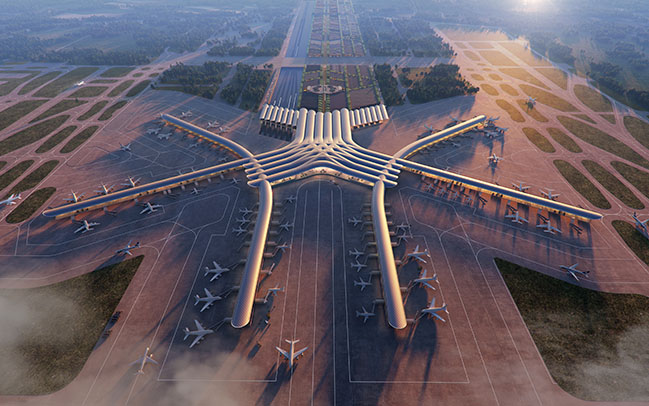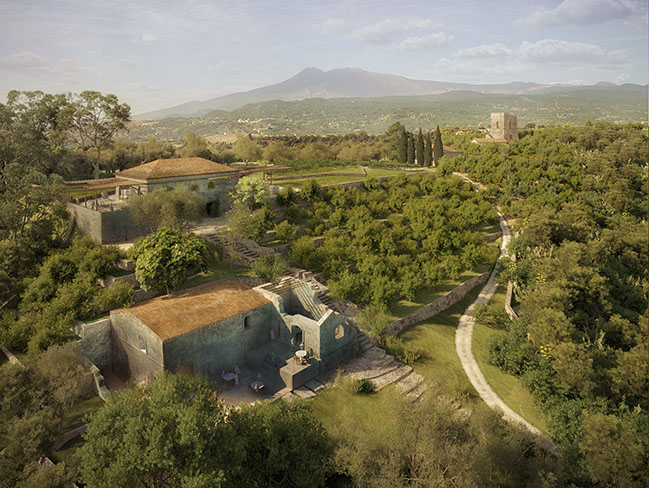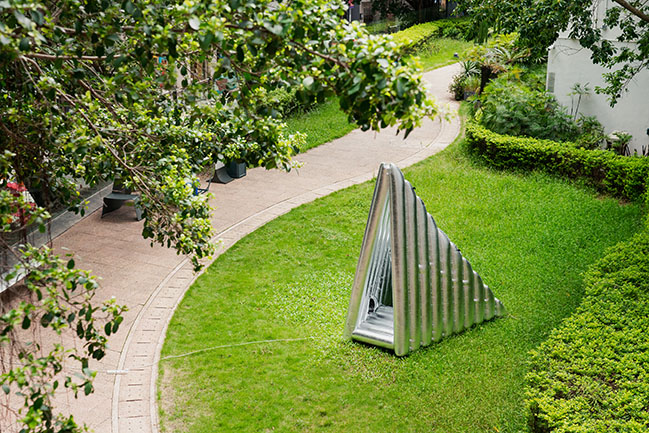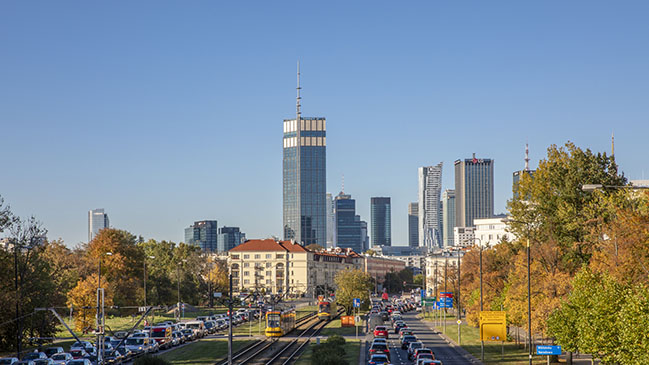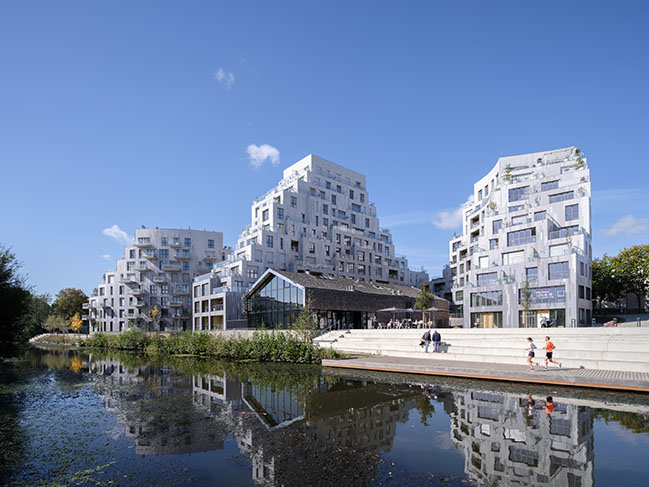11 / 10
2022
CRA sculpts a company dining hall in Italy by cutting out a piece of land and raising it above the ground. The project is developed for Mutti, the leading European producer of high-end tomato products. The canteen, a spacious, luminous piece of architecture created directly from nature, will serve factory workers and external diners alike, and will be run by a culinary team known for its Michelin-starred restaurants...

> CRA-Carlo Ratti Associati unveiled a design vision for fusion power plants
> Biophilic Skyscraper by BIG and CRA-Carlo Ratti Associati completes in Singapore
From the architect: International design and innovation office CRA-Carlo Ratti Associati unveils a business canteen in the countryside near Parma, Italy. It features a dining hall with a green roof made of compacted soil taken from the earth directly below it. Sitting in the recessed glass structure, diners will be fully immersed in vegetation, eating at the same level of the exterior meadow. Designed by CRA in collaboration with Creative Lead Italo Rota, the project is developed for Mutti, Europe’s leading producer of high-end tomato products. The building is currently under construction, and it is expected to open to the public in 2023.
The project is located in the small town of Montechiarugolo near Parma, in an area known as “Italy’s Food Valley”. It is part of the evolving master plan for Mutti’s new headquarters, first conceived by CRA in 2016 with the aim to better integrate the factory area with the neighboring areas. The new dining facility will be run by a culinary team renowned for its Michelin-starred restaurants, and will be accessible both to the company’s employees and to the general public. Adjacent to the new dining hall, an old tavern, visible from the main street, will be refurbished and will serve as the canteen’s kitchen.
“We started from a rather simple and primordial gesture: carving land out of the earth,” says Carlo Ratti, founding partner of CRA and professor at the Massachusetts Institute of Technology. “But there is a catch: this simple act is made possible by advanced technologies for construction and climate control. The canteen for Mutti advances our quest to merge the natural and the artificial worlds.”
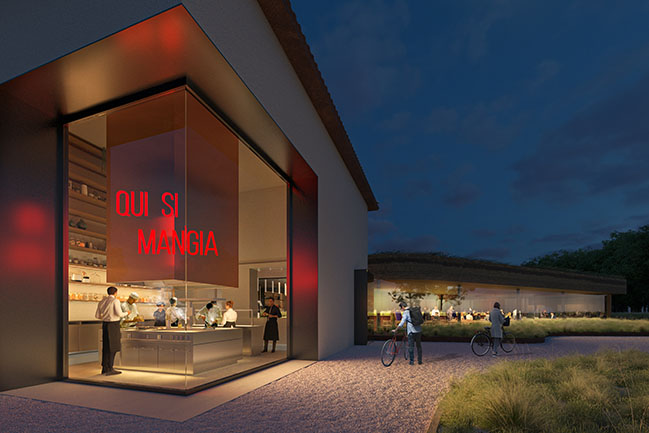
The principles of circularity manifest themselves throughout the building. The discarded tomatoes from Mutti’s production line are recycled to create resin that forms part of the interior space. Environmental control technologies are employed extensively to reduce energy consumption. And outside the built space, a 1.1-hectare garden devised by landscape architect Paolo Pejrone builds on the bounties of the local region.
The canteen forms a coherent unit with the tomato processing plant and other buildings in CRA’s masterplan for the Mutti estate. An earlier step in this process was the construction of The Greenary, a residence for the brand’s CEO Francesco Mutti that features a 10-meter-high tree in the center of the living space.
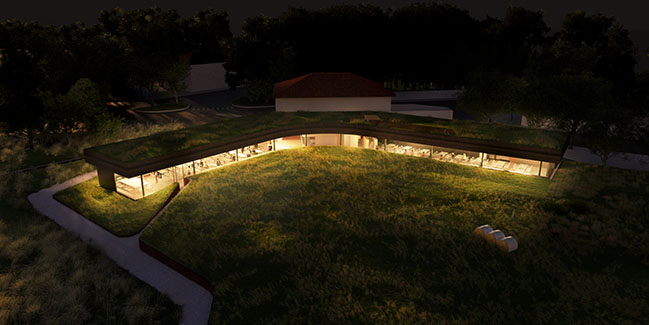
“The Mutti Canteen is the optimal reflection of the core values of our company,” says Francesco Mutti. “First and foremost, it contributes to our workers’ well-being and sense of belonging. Besides that, it fulfills an educational purpose to demonstrate the vision of Mutti, its dedication to agricultural traditions and gastronomic innovation.”
“In some respects, the design is a modern response to Edouard Manet’s painting Le Déjeuner sur l'herbe,” says Andrea Cassi, partner in charge. “But instead of picnicking on top of the grass, we are able to eat underneath it and imagine new ways of engaging with the natural environment.”
Several recent CRA projects have blurred the boundaries between the natural and the artificial, experimenting with new construction methods and circular materials. For Milan Design Week 2019, the Circular Garden installation explored the architectural potential of the fungal root mycelium. The Italian Pavilion at Expo 2020 Dubai, designed by CRA and Italo Rota, with Matteo Gatto and F&M Ingegneria, was developed as a “living lab” to advance the concepts of circularity in architecture, incorporating materials such as coffee grounds, recycled plastic and algae into the structure.
Project by: CRA-Carlo Ratti Associati
Location: Parma, Italy
Creative Lead: Italo Rota
CRA Team: Carlo Ratti, Andrea Cassi (partner in charge), Francesco Strocchio (project manager), Alberto Benetti, Mario Daudo, Serena Giardina, Anna Morani, Matteo Zerbi, Gary di Silvio, Pasquale Milieri, Gianluca Zimbardi
MEP Engineering: Projema
Structural Engineering: IngeMBP
Authority Approval, Accounting, Health & Safety Lead: Aldo Trombi
Landscape Design: Paolo Pejrone with Alberto Fusari
Construction: Ingegner Ferrari Spa
Images: CRA-Carlo Ratti Associati
The Mutti Canteen by CRA-Carlo Ratti Associati | Michelin-Starred Cuisine Under the Grass
11 / 10 / 2022 International design and innovation office CRA-Carlo Ratti Associati unveils a business canteen in the countryside near Parma, Italy...
You might also like:
Recommended post: Villa in Yoron by Case-Real
